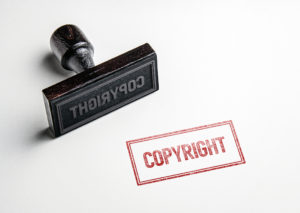
As a part of the front matter, a book's copyright page is very important, especially if you want to protect your writing from plagiarism. The front matter also includes sections such as the epigraph, the dedication, the foreword, the prologue, etc. The copyright page is most commonly found on the back of the book's title page. The copyright page is standard in any book — where it's poetry, fiction, nonfiction, memoir, or comic. Self-published books are no different, so they should include a copyright page.
According to the United States Library of Congress, copyright protects, "original works of authorship including literary, dramatic, musical, and artistic works, such as poetry, novels, movies, songs, computer software, and architecture."
As a first time self-publisher (or even an established one!), you're bound to have questions pop up along the way of your writing journey. Self-publishing puts a lot of work onto the author's shoulders, so DiggyPOD works hard to make everything as simple as possible in order to get your book printed faster. Copyright law is pretty intricate, so on this page we'll break down everything the aspiring self-published author needs to know in order to protect their work.
What Does a Book Copyright Page Include?
Copyright may seem intimidating, but what goes on a book's copyright page is pretty simple once broken down. We're going to walk you through, step-by-step, what should be included on your book's copyright page. The following is an example of a long copyright page, and this is what is typically found after the book's title page:
The long copyright page should include the following:
1. A copyright notice and year.
The copyright symbol ("©") should go next to the copyright owner's name. It should look like, "© 2017 by Jane Doe," or can be spelled out "Copyright © 2017 Jane Doe." The copyright owner is the author of the book, not the publisher or the printer. If any company requires that they be the copyright holder, don't publish with them. It's your work, regardless of who is printing it.
If you use a pen name (also known as a pseudonym), you can put that on the copyright page instead of your real name. However, when registering your copyright with the U.S. Copyright Office, be sure to include both names on the form (pen name and legal name) since it is a legal document.
The copyright year is the year you receive your copyright. If the book is reprinted into new editions, the copyright will list all of the edition years, starting with the latest. For example, if you first published a book in 2012, but published more editions in 2014 and 2017, it would read as such: "Copyright © 2017, 2014, 2012."
Be sure that the copyright year is the year your book is published, not written. Your copyright will last for the duration of your lifetime plus an additional 70 years. After that, the work is considered public domain.
2. Rights reserved notice.
The rights reserved notice states that the copyright holder (author) reserves all rights to reproduce the book or portions of the book. This phrase was created in the early 20th century at the Buenos Aires Copyright Convention, and it is technically no longer needed, as owning a copyright means that the author holds all the rights. It's still used in books, however, as a formality.
You can go as simple as stating, "All rights reserved," or you can expand upon it:
- All rights reserved, including the right to reproduce this book or portions thereof in any form whatsoever. For information, address the publisher.
- All rights reserved. This book or parts thereof may not be reproduced in any form, stored in any retrieval system, or transmitted in any form by any means—electronic, mechanical, photocopy, recording, or otherwise—without prior written permission of the publisher, except as provided by United States of America copyright law. For permission requests, write to the publisher, at "Attention: Permissions Coordinator," at the address below.
Any of these will do, it just comes down to your preference.
3. ISBN.
An ISBN (International Standard Book Number) is necessary if you plan to sell your book. ISBN are always 13 digits long, and the numbers correspond with regional codes, particular publishers, editions, etc. The ISBN is merely an identifier for your book; it has no legal weight. If you don't plan on selling your book, then there's really no need for an ISBN. If you do plan on selling your book, however, you'll need one for most retailers. If your book comes in more than one format (say, paperback and hardcover) you'll need different ISBNs for each.
You can purchase an ISBN through Bowker. It's easy to buy an ISBN (or several, if you have several books) online and assign them to your books via your online account. Just as with the copyright, you should be the owner of the ISBN number, not your printer or publisher, so be sure to buy it from Bowker only.
4. Library of Congress Control Number.
The Library of Congress Control Number (LCCN) is free to obtain (you can apply online) and shows that your book exists. It's necessary should you want to have it shelved in libraries, since libraries won't accept a book unless it has a LCCN.
If you don't want your book in a library (if you just want to sell it or give it to friends and family members as gifts), there's really no need to go through the process of registering your book with the Library of Congress.
5. Discl

0 Comments